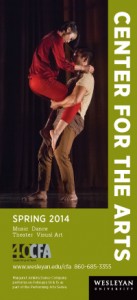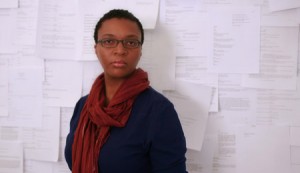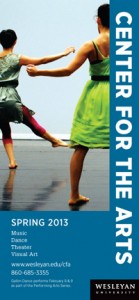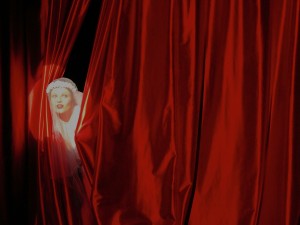This year, we invite you to join us as we welcome the world to Wesleyan. Artists working in contemporary or traditional forms from 18 different countries will be performing or exhibiting at the CFA over the next nine months.
 A centerpiece of this year’s program is Muslim Women’s Voices at Wesleyan, which begins in September. Each of the performers to be featured is Muslim or of Muslim heritage, has a distinct set of personal experiences, and is embedded in a particular place, society, and cultural tradition. It is our way of inviting audiences to celebrate the complexity of Muslim women today, while at the same time exploring the historical and cultural context from which these women have emerged. We are also inviting audiences to participate in the creative process as we give birth to a new play by Leila Buck ’99, based on stories of Muslim and Muslim-American women in our region.
A centerpiece of this year’s program is Muslim Women’s Voices at Wesleyan, which begins in September. Each of the performers to be featured is Muslim or of Muslim heritage, has a distinct set of personal experiences, and is embedded in a particular place, society, and cultural tradition. It is our way of inviting audiences to celebrate the complexity of Muslim women today, while at the same time exploring the historical and cultural context from which these women have emerged. We are also inviting audiences to participate in the creative process as we give birth to a new play by Leila Buck ’99, based on stories of Muslim and Muslim-American women in our region.
We are also bringing one of the United States’ most innovative theater companies working at the intersection of text and technology, The Builders Association, for two performances in October. Their amazing production Sontag: Reborn is a portrait of the younger years of one of America’s most iconic intellectuals, Susan Sontag. In November, the Theater and Music Departments join forces to mount the Tony Award-winning musical In the Heights, directed by Theater’s Cláudia Tatinge Nascimento with music direction by Nadya Potemkina, director of the Wesleyan University Orchestra. The musical was the thesis production of Lin-Manuel Miranda, a Theater major who graduated in ’02, who went on to win the Tony for “Best Original Score.” The book was written by Quiara Alegría Hudes, winner of the Pulitzer Prize, who will be a visiting faculty member at Wesleyan this year. It is sure to be an extraordinary production. And throughout the fall, the epic-scale, haunting landscape paintings of Professor of Art Tula Telfair will be on view in Zilkha Gallery. We invite you to enter into the imaginary worlds that Telfair creates in twelve large-scale paintings that are simultaneously awe-inspiring and intimate.
We launched our new website over the summer, and we hope you’ll visit and return often to find out about all of the faculty, student, and visiting artist events and exhibitions this year. We hope you will look to us as a place of enlightenment and enjoyment in the coming months.
Pamela Tatge
Director
Center for the Arts










